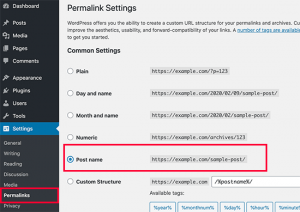
When you have thousands of keywords to target, focusing on 3 phrases to rank higher does not pay off as much. When you have thousands of pages on your website, optimizing a handful will have a low overall ROI. Inspecting specific queries and results in SERPs to understand authority, relevancy, freshness that Google is looking for might work for strategic phrases, but does not scale for all possible queries. It is useful when you have already narrowed down the field.
Today I would like to focus on all your content at once. I will help identify the gap between demand and supply. Compare what your content says about your expertise and what your links and rankings say about what you do. Gap analysis of your website data will show you content performance trends, will allow you to focus on specific areas, strengthening your online reputation and driving relevant traffic. It will also give you ideas on how to rank higher than your competition in strategic areas.
Then, you can conduct query analysis, apply intent and tailor to your personas. You can interview customers and stakeholders, run content audit, conduct experiments and optimization testing, adjust your paid search strategies. All that comes next, after you looked at your content as a whole and identified gaps in your website authority, relevancy, and ranking.
Let’s start at the beginning.
Gap Analysis
As always, start with a 3 step plan.
1. Identify what you plan to accomplish. The reason you started your gap analysis is because you are trying to improve something. What are the objectives you are trying to achieve? Is your content not showing up for relevant queries? Is it not ranking high enough lacking relevancy from search engine perspective? Bringing you non-converting traffic?
2. Analyze existing content. For each objective, specify what the current situation is after looking at data. If you need additional information, list the resources or help you need to proceed. Visualize the result – it is always the best way to see trends.
Compare your content performance to that of your competition. If they are doing better than you, get some ideas why and how to catch up to them.
3. Identify how you will close the gap. Create a tactical plan to bridge the gap and reach your goals.
Example
Let’s go over an example of a software company. One important thing to note: I am combining a lot of data to see trends and connections. I am looking for high level insights. For this exercise, the actual numbers are not as important to me as the ratios.
My objective: High SERPs visibility for relevant topics that result in better quality traffic.
I picked the last 30 days to pull data from Google Analytics. Tools like Majestic and SEMRush that I will be using, offer different timeframes, but for our purpose it will not make too much of a difference.
Analysis Of Existing Content
Step1: Gather data. Pull landing page data from your analytics tool. I am using Google Analytics. If we combine landing page data from Google Console and site analytics, we can bring together site content, its visibility in Google search, and traffic volume for that content into one report.
1. Go to your Google Analytics account. Then, Acquisition -> Search Engine Optimization -> Landing pages. You will get number of Impressions, clicks, Average Position, and CTR. Even though many argue that the data is not very accurate, I am not looking for the precise data here; my goal is to identify trends.
2. Go to Behavior -> Site Content -> Landing Pages. Here, I am interested in landing pages, i.e. the first page visitors saw when they got to the website.
3. How many landing pages from Google Analytics spreadsheet (all landing pages) appear in Google Search Console pages? Insight: topical visibility in Google search.
Step 2: Identify current topics on the site and traffic they attract from Google search for this topics. I identified 7 major topics. As you can see, most of the pages are indexed, i.e. they appear in Google search (blue).
However, some of the categories are doing better than others. For example, Products and Events clearly need to do better. My next step would be to investigate which pages are not indexed and why. Top priority will be to identify high converting pages that do not appear on the Google Console list and make them indexed.

Step 3: Determine visibility by topic. Count all pages from Google Analytics for each topic and compare with number of impressions for all pages from Google Console sheet for each topic. I also added “Value” – PPC metric from SEMRush. It will give us an estimate of how much I would have had to pay for the traffic through AdWords. You will have something like this.

Blog has the most pages. It is also performing well when posts show up on SERPs – there is a large number of clicks compared to overall impressions. The value of the traffic is not very significant. Perhaps, next step could be to look into posts by specific category (especially the ones that I am trying to make more visible) and optimize posts, promote them more.
It might pay off to categorize blog posts by category. Posts are different than pages. Therefore, I usually do not combine them. You can analyze just your articles in a similar way to gather insights into supply and demand. That way your content segment (blog) will have similar objectives.
Products have the most value and the most clicks. We know that some of the products pages were not indexed. Same goes for Customer. Evaluating product and customer pages just moved higher on the priority list based on this graph. Also, it might be a good idea to determine if I need more product pages. I could perform Content Gap Analysis just on product pages.
Events is a concern. Events have strong ties to local visibility and they might need help becoming more prominent on SERPs. Next step would be to check Event schema, local ranking, etc. to promote events locally.
Step 4: Competition. Sometimes insights from close competitors help bridge the traffic gap. For example, I have a close competitor that has approximately the same traffic from more keywords than I do. It is possible that by ranking for more queries, I can bypass my competitor. Next step would be to compare our keywords. SEMRush has the information.

I do not care about keywords that are not relevant to my topic, but it helps to evaluate where they rank better and why. I can pull data from SEMRush on their ranking URLs, categorize their content by topic, and determine where I can do better than them in ranking for my Products and Services.
Step 5: Evaluate links by category. Pull link data from Majestic, separate it by category. I usually create broader categories for for Majestic’s topics that are not as relevant to my business and more detailed categories for the topics that are important to me. For example, I have split “Computers” into “Sofware”, “Business”, and “Computers”, where Arts topic encompasses all subtopics offered by Majestic. I am looking at Referral Domain Value (authority of the domain on each topic), My site topic value (how authoritative my site is considered for each topic), and Competitor (how high is my competitor’s authority on each topic).
Here is the result.

I get very strong domains referring traffic to me in Software, Reference, and Business. My website is not considered authoritative in Reference, which is not a problem since it is not information-focused site. However, Security is a big topic for us and I need to get more links from highly authoritative Security websites. Especially, because my competitor is not doing so well ranking for Security topic either.
You can also go one step further and map your website categories to Majestic’s topics. Then you can easily compare what your content says about you compared to your reputation based on links. Add competitor data and see which competitor ‘s content you need to analyze to improve your ranking.
Bridge The Gap
Now we are ready to put together a high level plan.
1. Evaluate Products and Events pages and make sure high conversion pages are indexed
2. Find opportunities to rank for topics by analyzing my competitor ‘s visibility and targeting specific pages and topics
3. Improve visibility for Security by creating more relevant content and increasing referrals from high authority Security websites.
At this point, I am ready to jump into query analysis, optimizing for intent, and crafting a link plan.
Gap Analysis Summary
Large websites with thousands of pages can get out of focus if you do not step back and look at your content as one entity. Content gap analysis like this helps see the trends and high level opportunities without getting buried in details.
In my example today I am addressing possible perception gap: when it comes to my company expertise and authority, are search engines and I are on the same page? How can I help Google rank my content higher for relevant queries? My content is doing a good job signaling to the search engines what my company is all about. I can also see where it can do better to help strengthen the site authority for specific topics.
My plan is clear. How about yours?
Hand-Picked Related Articles:
- A 7-Step Guide To Creating Your Content Strategy
- How to Develop a Content Strategy for an Unfamiliar Niche
- Content Re-packaging: How To Finally Make Your Content Strategy Work
* Adapted lead image: ![]() Public Domain, pixabay.com via getstencil.com
Public Domain, pixabay.com via getstencil.com
How To Do A Content Gap Analysis
The post How To Do A Content Gap Analysis appeared first on Search Engine People Blog.
(200)
Report Post






